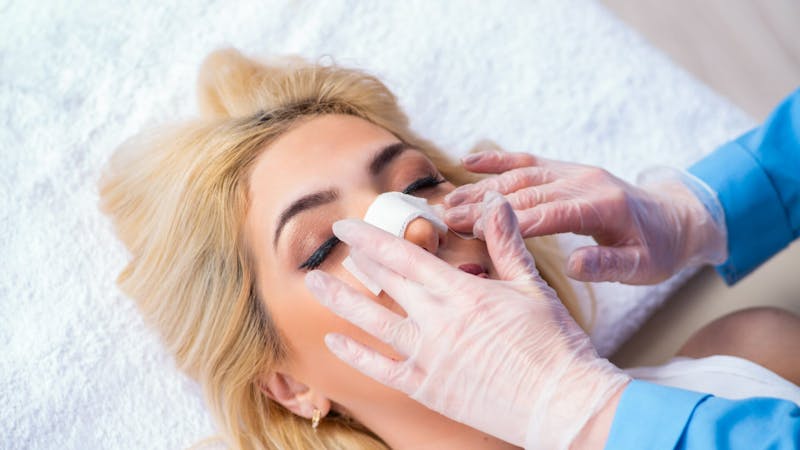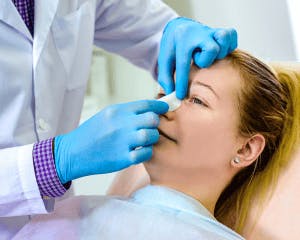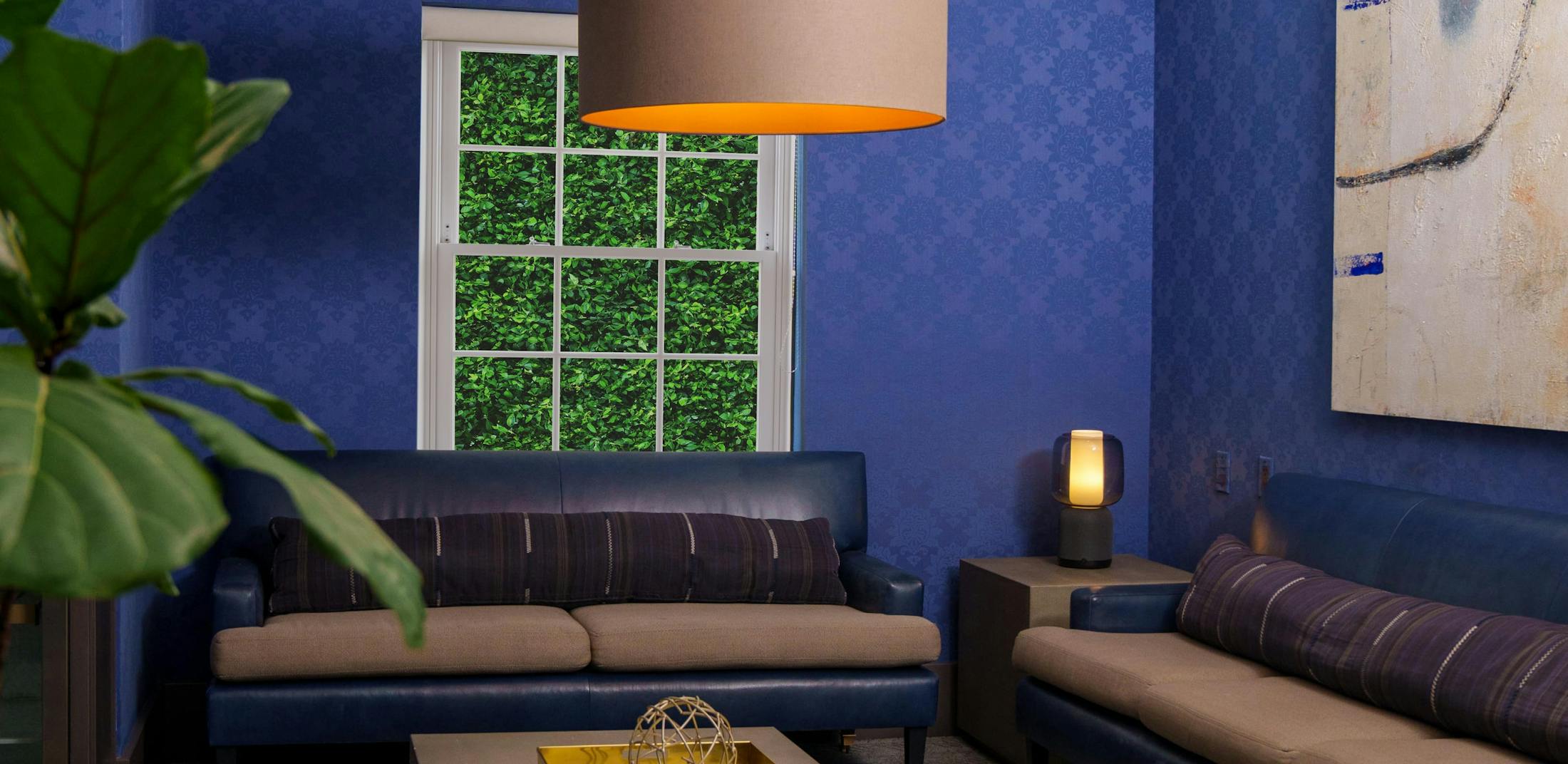
A rhinoplasty, or nose job, is a common cosmetic surgery that alters the appearance and function of the nose. While many people are interested in the potential benefits of rhinoplasty, some may be concerned about the potential scarring that can result from the procedure. In this blog post, we will discuss how much scarring is involved in a rhinoplasty procedure.
The Natural Scarring Process After Rhinoplasty
Scarring is a natural response to the body experiencing injury. Whenever the skin is cut, whether it is intentionally during surgery or accidentally, the body responds by forming scar tissue as part of the healing process. This scar tissue is composed of collagen fibers, which are produced by the body to help repair and replace damaged tissue.
In rhinoplasty surgery, the surgeon typically makes incisions in the skin of the nose to access the underlying nasal structure. Depending on the type and extent of the surgery, these incisions can cause the body to respond by forming scar tissue.
The degree of scarring that occurs will mostly depend on several factors, including the type and extent of the surgery, the skill and experience of the surgeon, and the patient’s individual healing response. Some patients may be more prone to developing excessive scarring than others, while others may have a genetic predisposition to developing keloid or hypertrophic scars.
However, it’s important to note that in the majority of cases, the scarring that occurs after rhinoplasty is usually minimal, inconspicuous, and can be effectively managed with proper care and attention. It’s therefore reassuring to know that as a rhinoplasty patient, you can also take steps to minimize scarring and promote optimal healing by following your surgeon’s instructions and taking good care of yourself during recovery.
Closed vs. Open Rhinoplasty Scarring
Generally, the amount of scarring that occurs during a rhinoplasty procedure will vary depending on the type of rhinoplasty procedure you have. The two main techniques are either closed or open rhinoplasty.
- Closed rhinoplasty: In a closed rhinoplasty, the surgeon makes incisions inside of the nostrils to access the cartilage and bones of the nose. This means there are no visible scars on the outside of the nose. This approach is usually recommended for patients who require minor modifications to their nasal structure, as it is less invasive and requires less healing time than an open rhinoplasty.
With no external incisions, patients experience fewer postoperative issues. However, this approach may not be suitable for patients who require more extensive nasal reconstruction.
- Open rhinoplasty: In an open rhinoplasty, the surgeon makes a tiny incision across the strip of skin that separates the nostrils, called the columella. By lifting the skin, the nasal structure that lies underneath is easily accessed. The surgeon can then modify the bones and cartilage to create the desired shape and size of the nose. Because the surgeon has a direct view of the nasal structure, an open rhinoplasty is often recommended for patients who require more extensive nasal reconstruction or have a more complex case.
The improved visibility and access provided in an open rhinoplasty is overall far more important to the final result than the short term appearance of external incision. With proper care and attention, the scar will usually heal nicely and become invisible over time.
Both of these procedures have positives and negatives. A skilled plastic surgeon will be able to recommend the most appropriate approach for each patient based on their specific needs and desired outcome.
Additional Aspects of Scarring
In addition to the type of rhinoplasty performed, the extent of the surgery will also affect scarring. If the surgeon is only making minor changes to the shape or size of the nose, there will likely be less scarring than if the surgery is more complex. However, it’s important to note that even with minor changes, some degree of scarring is still possible.
Another factor that can affect scarring is the skill and experience of the surgeon. A skilled plastic surgeon will take great care to minimize scarring and ensure that any scars that do form are as inconspicuous as possible. This may involve using precise incision techniques, minimizing tissue trauma, and carefully suturing incisions to promote optimal healing.
Scarring can also vary from person to person. Some people are more prone to scarring than others, and factors like skin type, age, and general health can affect the extent and appearance of scars. However, even for individuals who are prone to scarring, there are steps that can be taken to minimize scarring and promote optimal healing.
Minimizing Scarring After Rhinoplasty
 After a rhinoplasty procedure, patients can expect some degree of swelling, bruising, and discomfort. Always follow the preoperative and postoperative instructions provided by the surgeon, including keeping the nose clean and avoiding strenuous activity for a period of time to minimize any issues. Patients may also be advised to wear a nasal splint or cast for several days to help support the nose and promote optimal healing.
After a rhinoplasty procedure, patients can expect some degree of swelling, bruising, and discomfort. Always follow the preoperative and postoperative instructions provided by the surgeon, including keeping the nose clean and avoiding strenuous activity for a period of time to minimize any issues. Patients may also be advised to wear a nasal splint or cast for several days to help support the nose and promote optimal healing.
Although it’s advised to always follow the specific instructions of your surgeon, there are several things patients have been known to do to minimize scarring after rhinoplasty. These typically include:
- Avoiding sun exposure: Exposure to the sun’s UV rays can cause hyperpigmentation and make scars more noticeable. Patients should limit direct sun exposure to the nose and use an approved sunscreen if direct sun exposure is unavoidable.
- Massaging the scar: Patients should only begin a gentle massage regimen after consulting with their surgeon. If advised, gentle massage can sometimes help break down scar tissue.
- Applying silicone gel or sheets: Surgeons will sometimes advise using silicone, which is known to help soften and flatten scars. Patients can apply silicone gel or sheets to the incision site to help minimize scarring.
- Eating a healthy diet: Eating a healthy, balanced diet can help promote optimal healing after surgery. This includes consuming foods that are rich in vitamins A, C, and E, which promote healthy connective tissue growth. Drinking lots of water is also usually advised.
- Quitting smoking: Smoking can increase the risk of scarring. Patients who smoke should quit smoking at least two weeks before and after surgery to promote healing and minimize scarring.
- Avoid overly touching the nose: Try not to casually touch your nose too much for at least two weeks after surgery to prevent infection and reduce the risk of scarring.
- Keep the area clean and dry: As much as possible, try to keep your nose clean and dry after surgery. When cleaning, use only approved gentle cleansers and avoid harsh chemicals or fragrances.
- Follow up with your surgeon: Regularly following up with your doctor for check-ups is important in order to monitor progress and detect any signs of excessive scarring early so they can be appropriately addressed.
Choosing a Rhinoplasty Surgeon
It’s clear that scar tissue can be minimized, in part, due to the expertise and skill of the surgeon you choose to perform your rhinoplasty procedure. Therefore, it’s smart to take the time to research the surgeon’s credentials, read reviews, and consider their bedside manner and approach to patient-centered care. A board-certified surgeon who takes the time to thoroughly explain why a specific procedure and technique are right for you, answers any questions, and is highly qualified with an approachable bedside manner will typically lead to a better overall experience.
Key Takeaways
In summary, it’s important to understand that while scarring is typically a natural response to rhinoplasty surgery and is a normal part of the healing process, the amount of scarring involved in the procedure will depend on several factors. Thankfully, there are steps that can be taken to minimize scarring and promote optimal healing. Patients should work closely with their plastic surgeon to develop a customized treatment plan that addresses their individual needs and concerns.
If you are considering a rhinoplasty and would like further advice on ways to minimize scarring, please contact Dr. Behrooz A. Torkian, MD, at Torkian Facial Plastic Surgery today.

